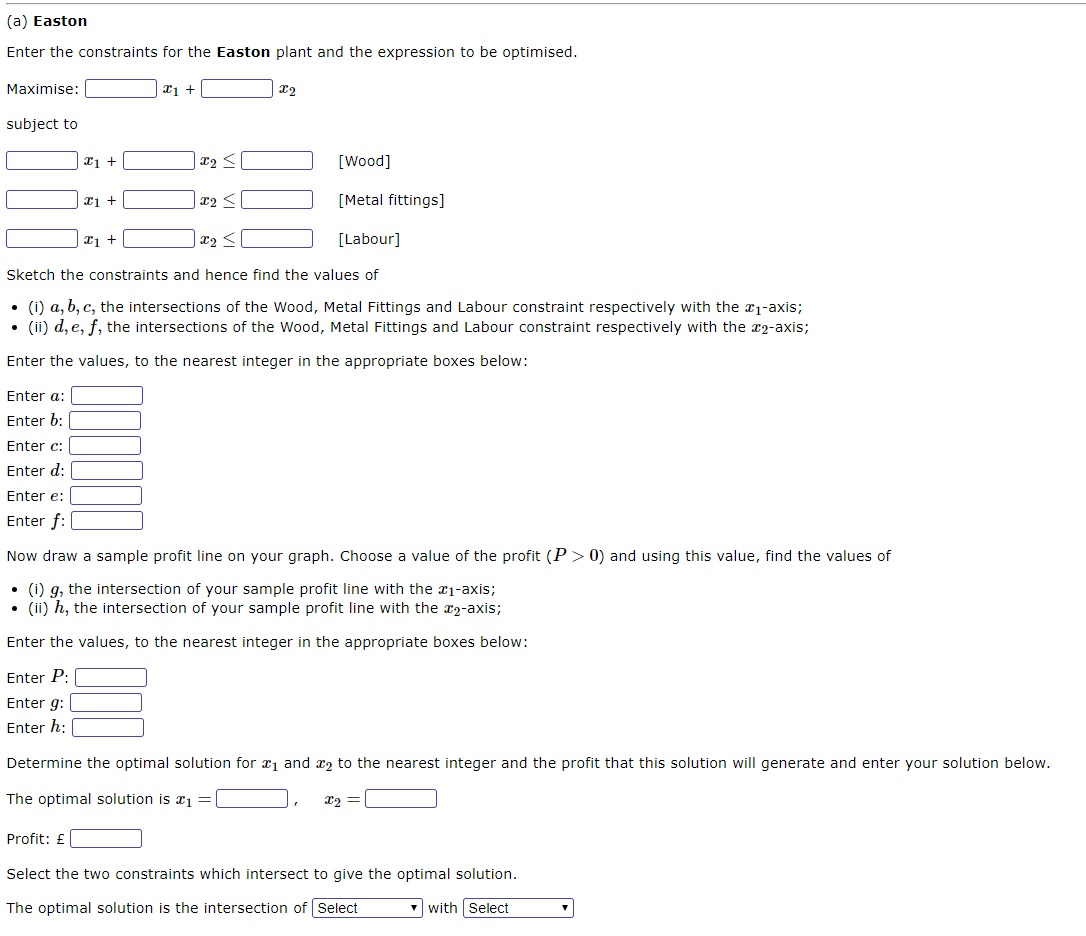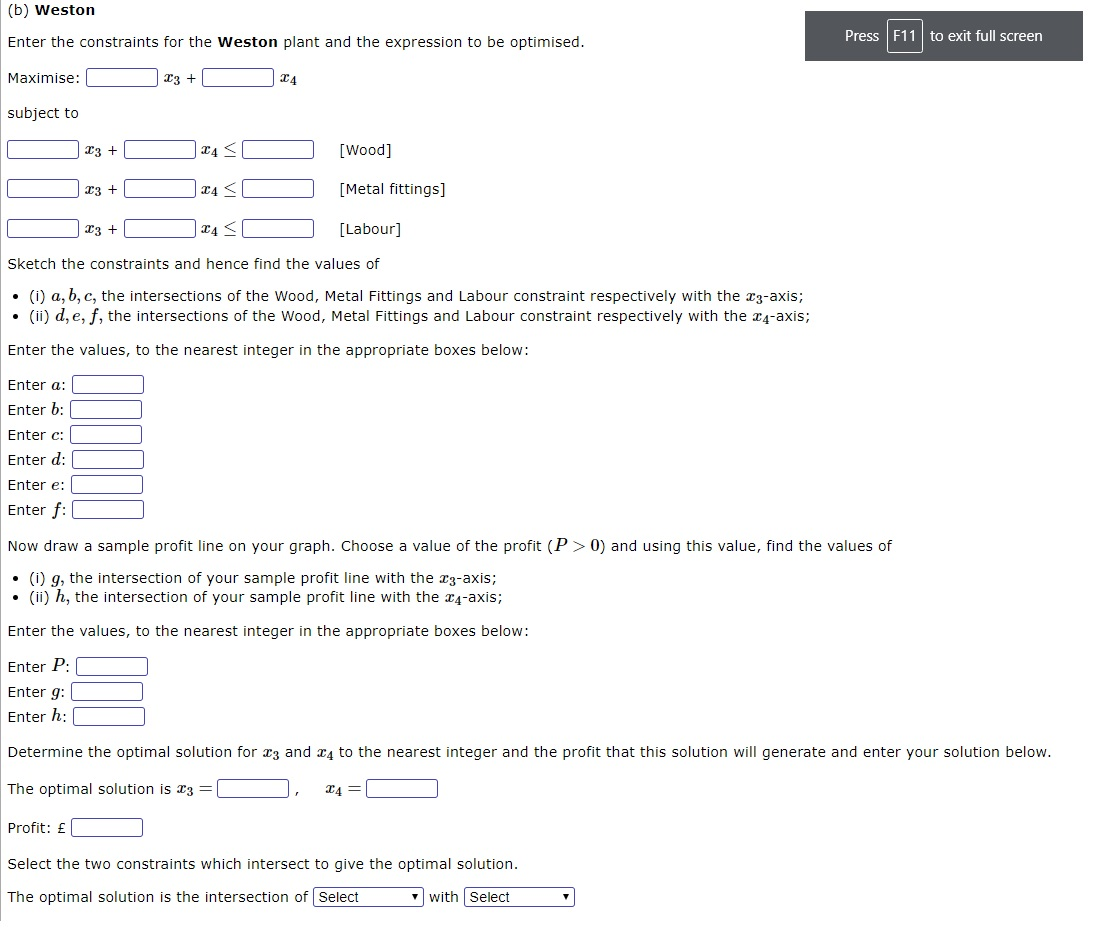Question
The scenario Park Furnishings manufactures school and university classroom furniture. The company has two production plants, located at Easton and Weston. The Easton plant produce
The scenario
Park Furnishings manufactures school and university classroom furniture. The company has two production plants, located at Easton and Weston. The Easton plant produce tables and chairs and the Weston plant produces desks and computer workstations. Park has a working day of 7.5 hours and employs thirteen workers at each plant. You may assume that there is a total of 24 working days every month.
All Park products are manufactured using finished pressed wood and polished aluminium fittings. Including scrap, each table and desk uses 20 m2 of pressed wood whereas each chair and workstation needs 12.5 m2 and 30 m2 respectively. A total of 105000 m2 of pressed wood is available each month and is divided equally between the two plants. The aluminium fittings that reinforce the legs of all the production items are purchased from an outside supplier. Each plant can purchase up to 4000 boxes of fittings per month and one box is required for every item of furniture produced. Production times are 72 minutes per table, 18 minutes per chair, 90 minutes per desk and 2 hours per workstation.
The unit profit for chairs and tables are 32 and 72 respectively, whereas each desk and workstation generates profits of 104 and 136 respectively.
Park is considering combining operations of both plants into a single factory. This consolidation will have the advantage of combining all available production resources as well as reducing administration costs by 1140 per month; however they have estimated that the cost of renovating and equipping the factory will be 900000. Due to the current financial position Park Furnishings is only prepared to go ahead with the combined operation if it saves money in the first year of operation.
Let
- x1 represent the number of tables made per month;
- x2 represent the number of chairs made per month;
- x3 represent the number of desks made per month;
- x4 represent the number of workstations made per month;
where x1,x2,x3,x40x1,x2,x3,x40

 In addition to these answers can you provide the graphs required for part A and B as well as workings for all parts.
In addition to these answers can you provide the graphs required for part A and B as well as workings for all parts.
Step by Step Solution
There are 3 Steps involved in it
Step: 1

Get Instant Access to Expert-Tailored Solutions
See step-by-step solutions with expert insights and AI powered tools for academic success
Step: 2

Step: 3

Ace Your Homework with AI
Get the answers you need in no time with our AI-driven, step-by-step assistance
Get Started


